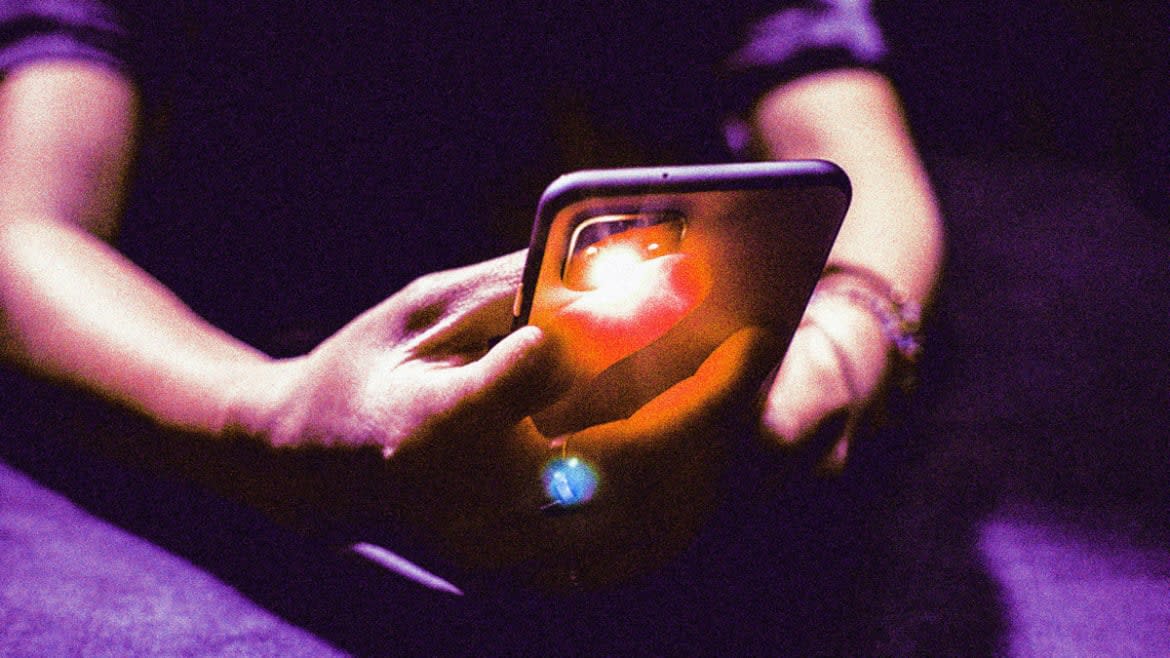This App May Detect If You Have Dangerously Low Blood Oxygen

- Oops!Something went wrong.Please try again later.
One day, patients struggling to breathe in bed with a respiratory illness like asthma or COVID-19 may have a diagnostic solution at their fingertips…literally. A team of scientists have created a camera-based blood oxygen sensor that requires just a smartphone and a finger.
It remains to be seen if the results will hold up in larger trials or if the new method will be able to avoid the well-known skin tone biases of commercially available pulse oximeters. However, the researchers see their method as a promising and accessible alternative to tools that warn patients about dangerously low blood oxygen levels—a condition called hypoxemia.
“Our results, in this pilot study of [six] subjects, provide a positive indication that a smartphone could be used to assess risk of hypoxemia without the addition of extra hardware in the future,” the authors wrote in the study, which was published on Monday in the journal npj Digital Medicine. They added that further research could lead to a low-cost way of managing chronic respiratory diseases like asthma and COPD, as well as acute illnesses like COVID-19.
How Bots Can Prevent Opioid Overdoses Before They Happen
Existing smartphone-based oximetry—a term used to describe the process of measuring one’s oxygen levels—has been deemed unreliable and inaccurate in comparison to traditional pulse oximeters, which shine light through a person’s finger and calculate blood oxygen levels based on how much of the light passes through. And many smartphone methods require the user to hold their breath for extended periods of time, which can be uncomfortable or infeasible. The scientists set out to build a system that relied on smartphone videos taken with the flash on, of a person’s finger as they breathed normally. Based on the video, a deep-learning model would then calculate blood oxygen levels.
The six participants in the study strapped masks to their faces and breathed in a mixture of oxygen and nitrogen for around 15 minutes, while oxygen levels were slowly lowered. They placed one of their fingers in a traditional pulse oximeter and another on top of a smartphone camera. Data from four of these participants were used to train the model, which then predicted blood oxygen levels for the remaining two participants based on the videos. These results were compared to the pulse oximeter readings.
For all six participants, when the smartphone camera method classified readings as below 92 percent blood oxygen saturation (a common benchmark used to advise patients to go to the hospital for possible hypoxemia), it was wrong 22 percent of the time. When it classified readings as above 92 percent, it was wrong 14 percent of the time, as compared to the pulse oximetry data.
While these results mean that this method is not ready for the clinic, the researchers hope that future work will build off this technique. Training the model on a large and diverse dataset may improve its accuracy, particularly for people with thick fingertip skin and people of color who are currently not served well by pulse oximeters due to the two wavelengths of light used by the devices. Follow-up studies may also consider comparing the model’s predictions to arterial blood gas readings, which, unlike pulse oximetry data, have not been shown to be racially biased.
"One of our subjects had thick calluses on their fingers, which made it harder for our algorithm to accurately determine their blood oxygen levels," lead author and University of Washington computer scientist Jason Hoffman said in a press release. "If we were to expand this study to more subjects, we would likely see more people with calluses and more people with different skin tones. Then we could potentially have an algorithm with enough complexity to be able to better model all these differences."
Got a tip? Send it to The Daily Beast here
Get the Daily Beast's biggest scoops and scandals delivered right to your inbox. Sign up now.
Stay informed and gain unlimited access to the Daily Beast's unmatched reporting. Subscribe now.

